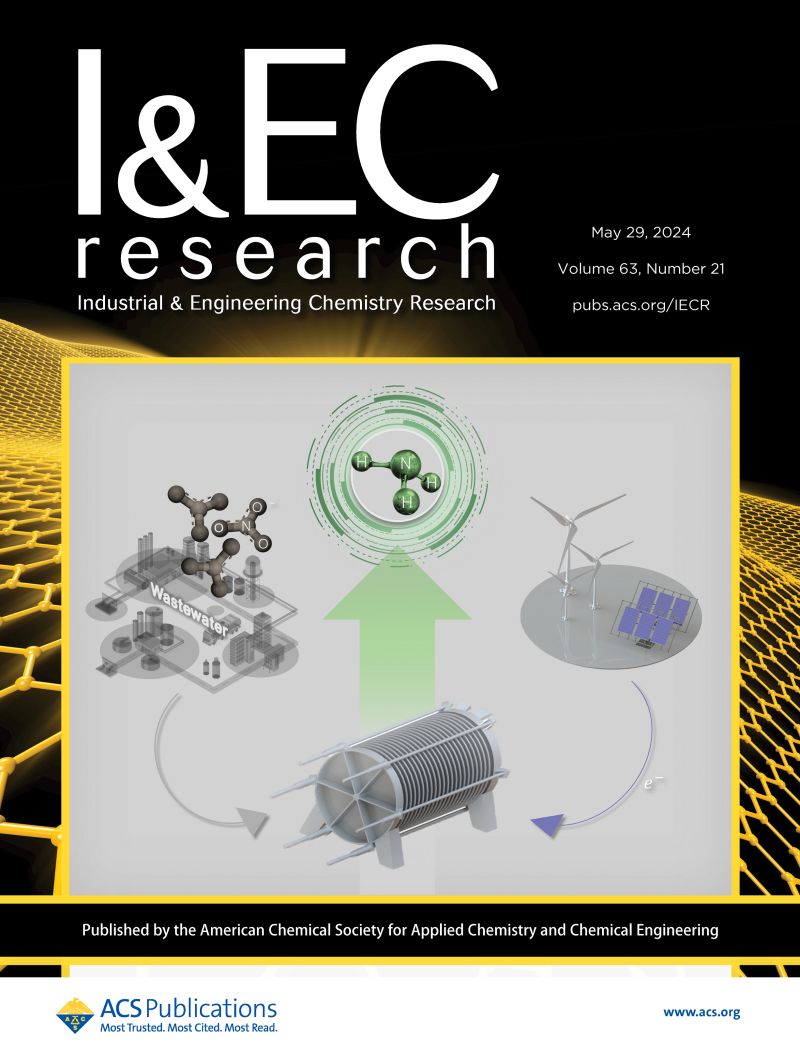In Situ Exsolvation of Cu Nanoparticles to Enhance Anode Catalysis in Direct Carbon Solid Oxide Fuel Cells
IF 3.8
3区 工程技术
Q2 ENGINEERING, CHEMICAL
引用次数: 0
Abstract
Direct carbon solid oxide fuel cells (DC-SOFCs) are energy-conversion devices that can be utilized to directly convert the chemical energy in carbon into electrical energy. However, the development of DC-SOFCs is hindered by the inefficient mass transfer process on the anode surface. Herein, B-site Cu-substituted (PrBa)0.95Fe1.8–xTi0.2CuxO6−δ (PBFTCx, x = 0–0.3) materials are synthesized via the sol–gel combustion method and evaluated as anode materials for DC-SOFCs. These Cu@PBFTCx (x = 0–0.3) anode materials show significantly improved CO adsorption capacities and oxygen ion conductivities, leading to improved catalytic performance in DC-SOFCs. Among the Cu-doped samples, Cu@PBFTC0.2 shows the most enhanced CO adsorption capacity and the highest ion conductivity in air. A single cell assembled with a Cu@PBFTC0.2 anode exhibits excellent performance when using nanoactivated carbon as a fuel, achieving a peak power density of 518.98 mW cm–2 at 800 °C. This work demonstrates the excellent potential for utilizing Cu@PBFTCx materials as DC-SOFC anodes.

原位溶出Cu纳米颗粒增强直接碳固体氧化物燃料电池的阳极催化作用
直接碳固体氧化物燃料电池(DC-SOFCs)是一种能量转换装置,可以将碳中的化学能直接转化为电能。然而,由于阳极表面传质过程效率低下,阻碍了DC-SOFCs的发展。本文采用溶胶-凝胶燃烧法合成了b位cu取代(PrBa) 0.95Fe1.8-xTi0.2CuxO6−δ (PBFTCx, x = 0-0.3)材料,并对其作为DC-SOFCs的负极材料进行了评价。这些Cu@PBFTCx (x = 0-0.3)阳极材料表现出显著提高的CO吸附能力和氧离子电导率,从而提高了DC-SOFCs的催化性能。在cu掺杂样品中,Cu@PBFTC0.2的CO吸附能力增强最大,离子在空气中的电导率最高。当使用纳米活性炭作为燃料时,以Cu@PBFTC0.2阳极组装的单电池表现出优异的性能,在800°C下达到518.98 mW cm-2的峰值功率密度。这项工作证明了利用Cu@PBFTCx材料作为DC-SOFC阳极的巨大潜力。
本文章由计算机程序翻译,如有差异,请以英文原文为准。
求助全文
约1分钟内获得全文
求助全文
来源期刊

Industrial & Engineering Chemistry Research
工程技术-工程:化工
CiteScore
7.40
自引率
7.10%
发文量
1467
审稿时长
2.8 months
期刊介绍:
ndustrial & Engineering Chemistry, with variations in title and format, has been published since 1909 by the American Chemical Society. Industrial & Engineering Chemistry Research is a weekly publication that reports industrial and academic research in the broad fields of applied chemistry and chemical engineering with special focus on fundamentals, processes, and products.
 求助内容:
求助内容: 应助结果提醒方式:
应助结果提醒方式:


